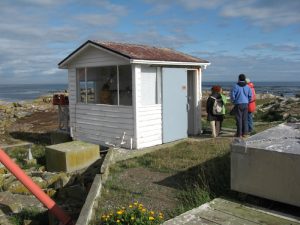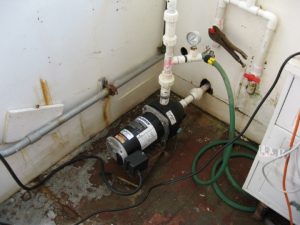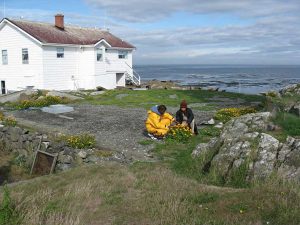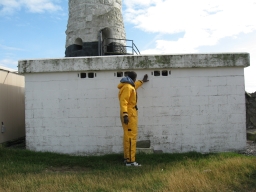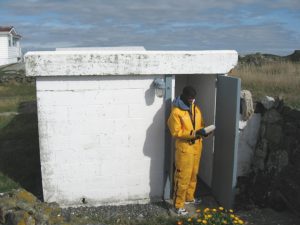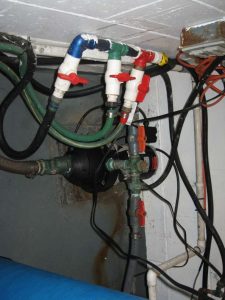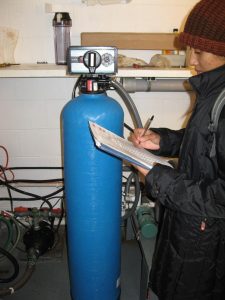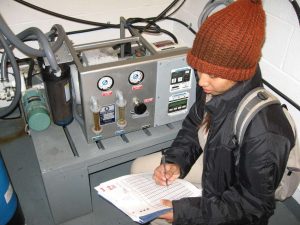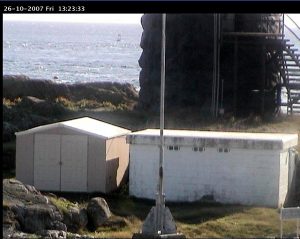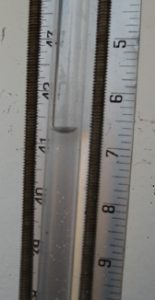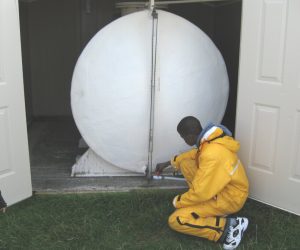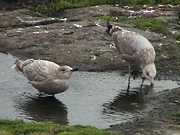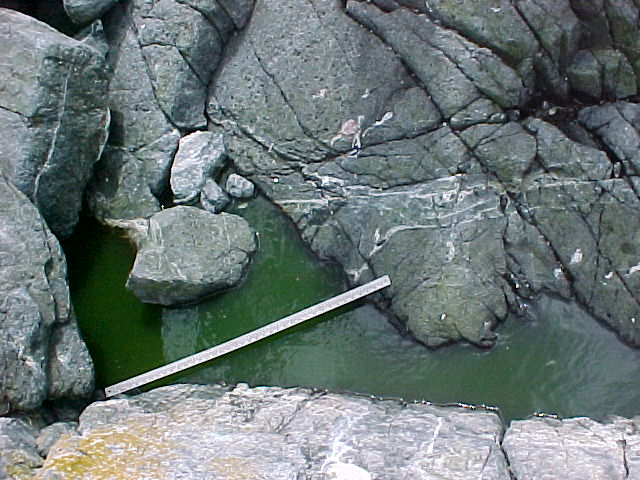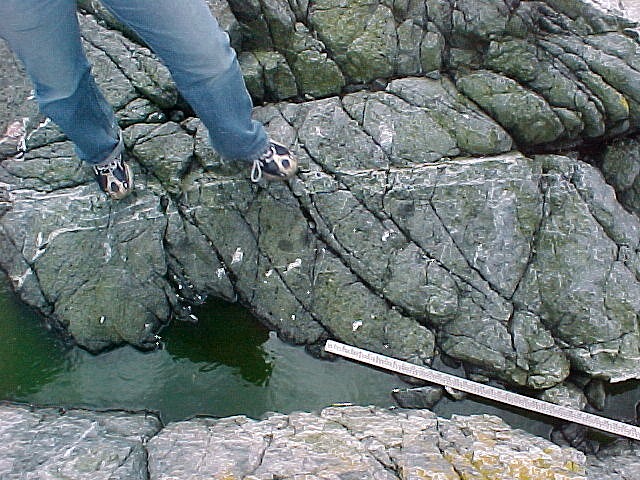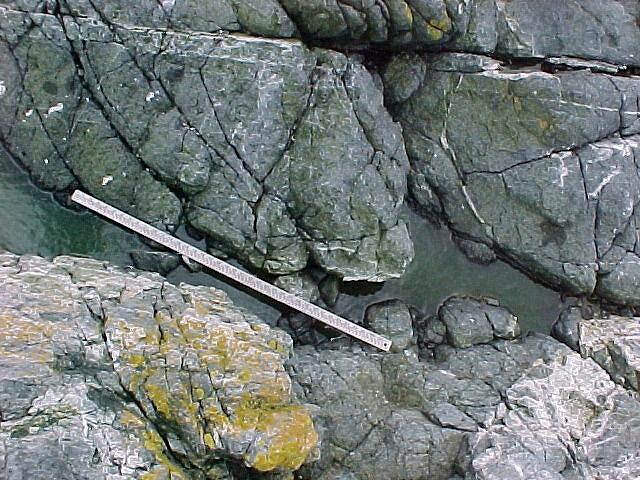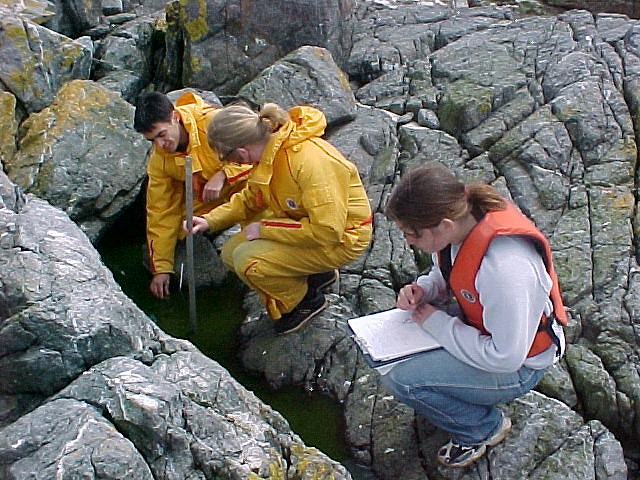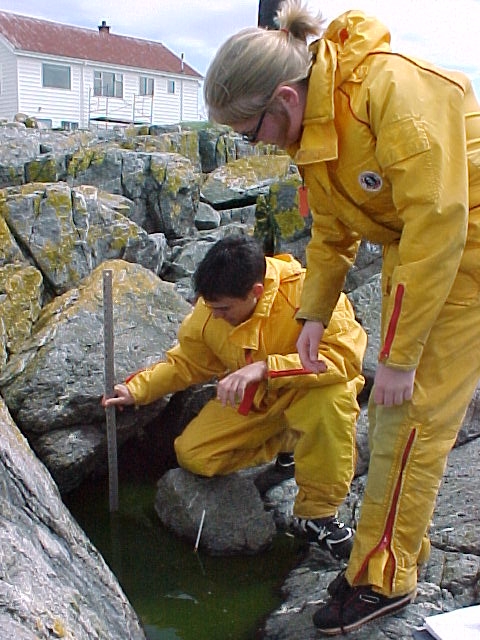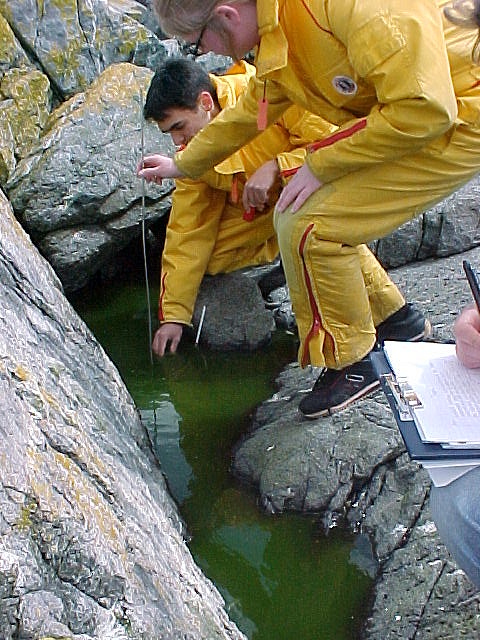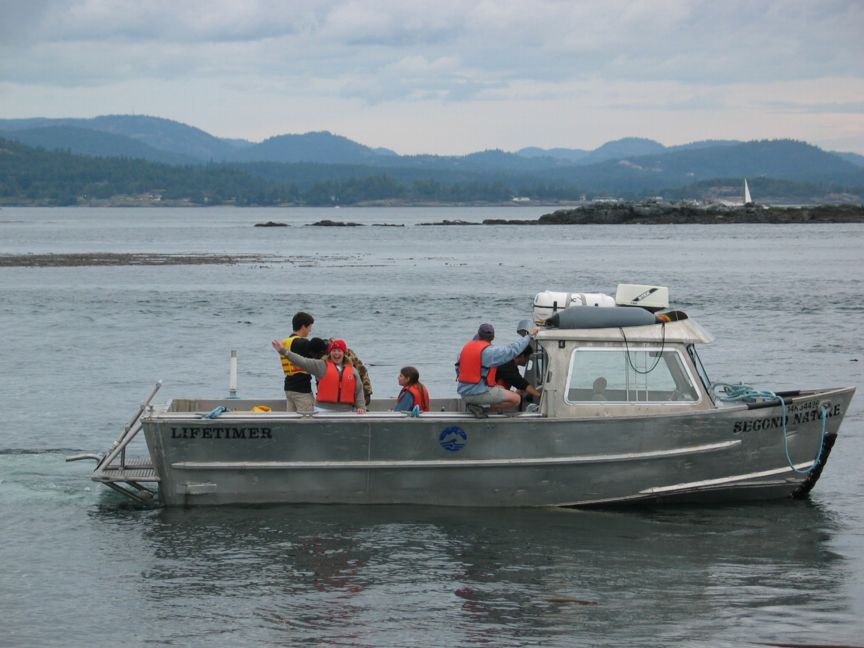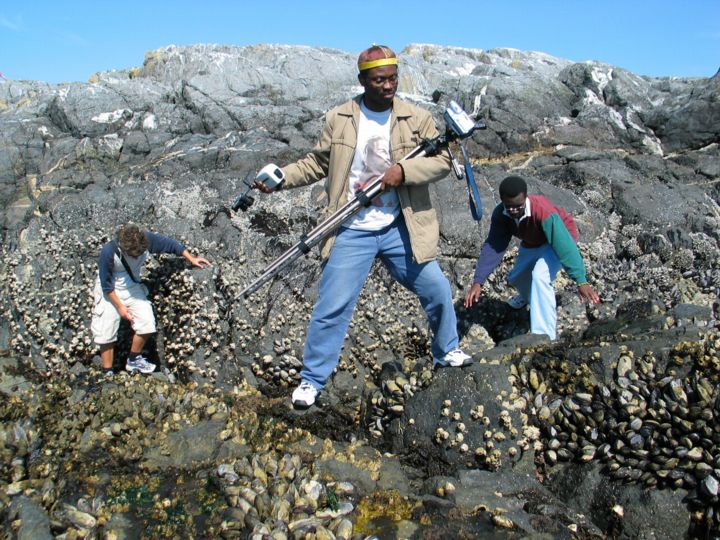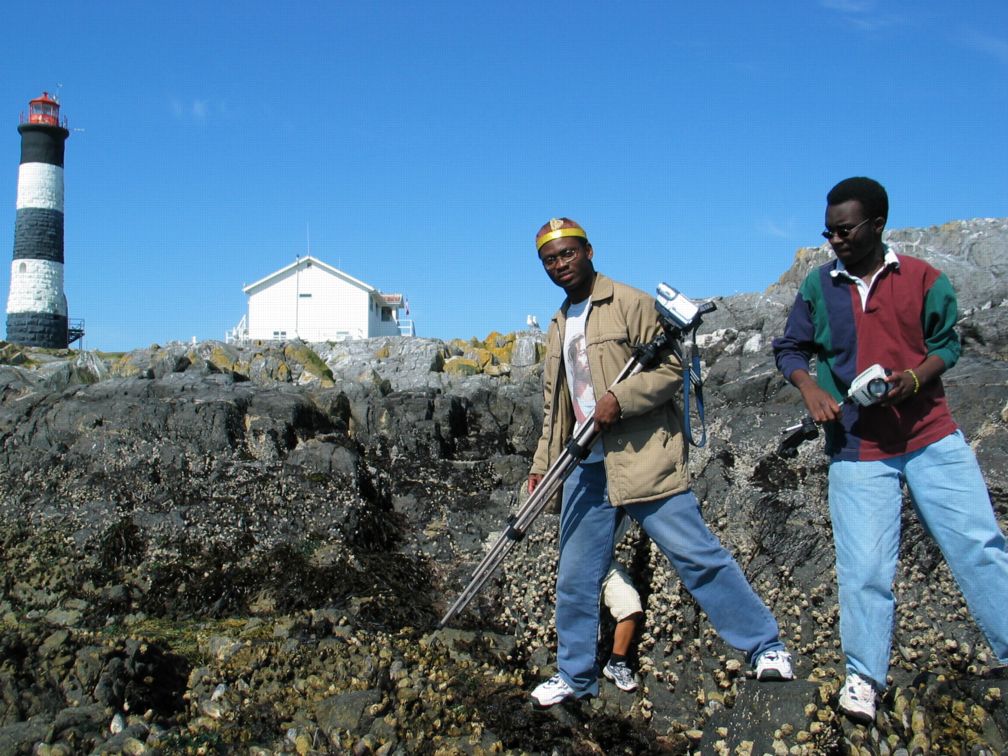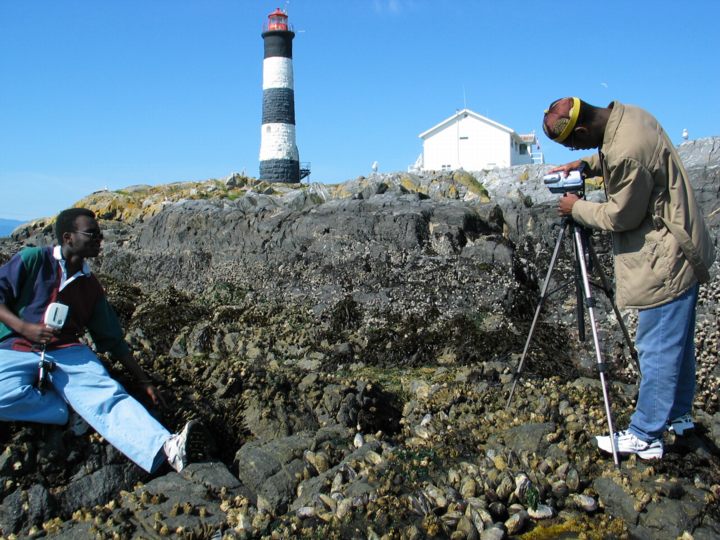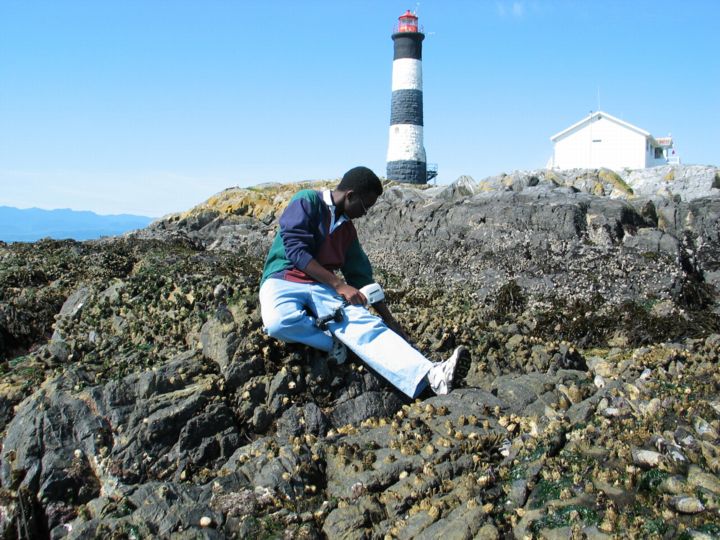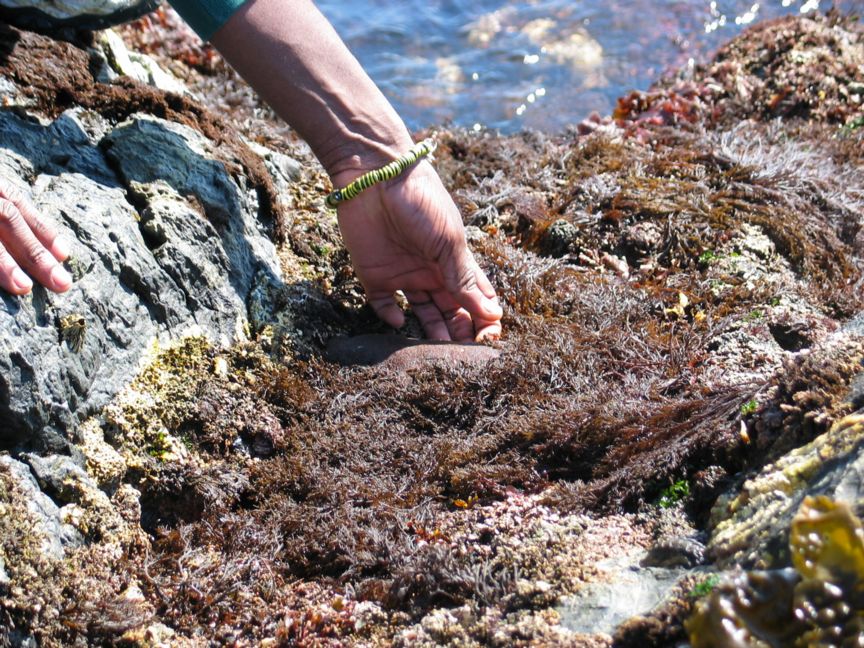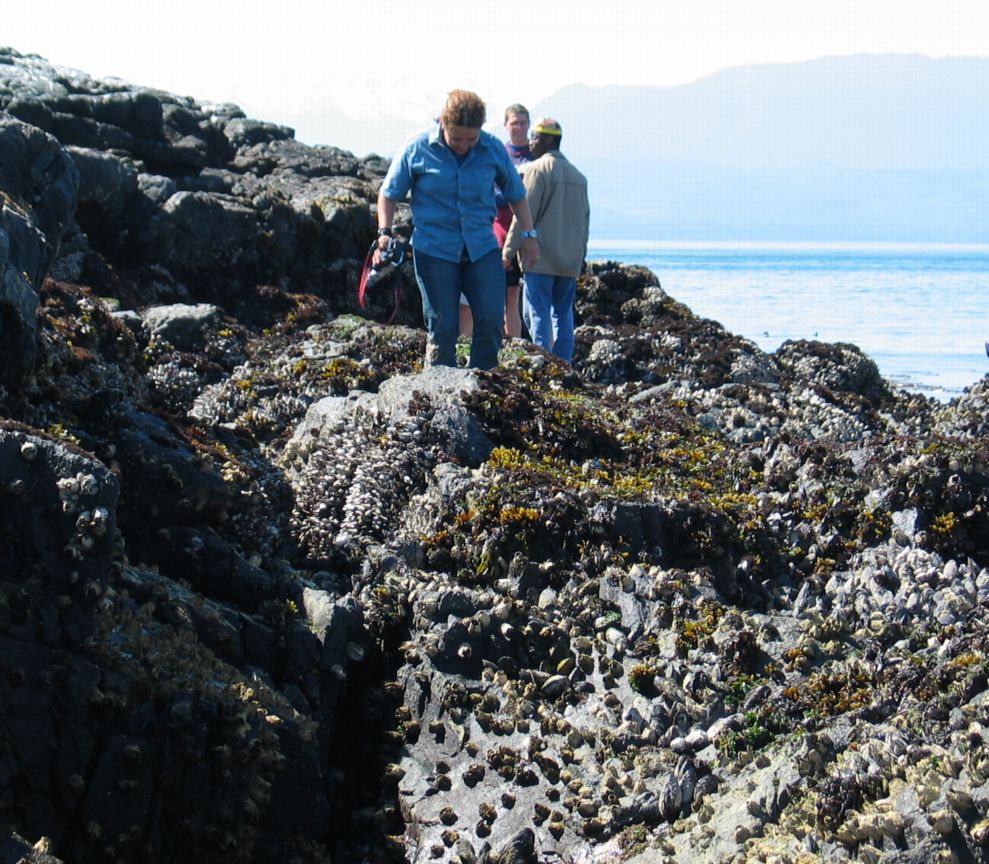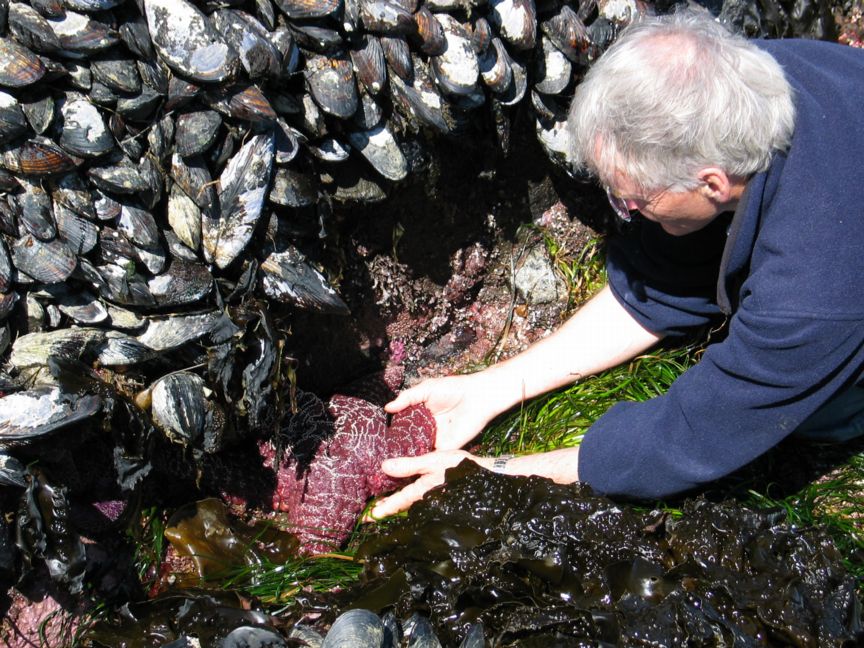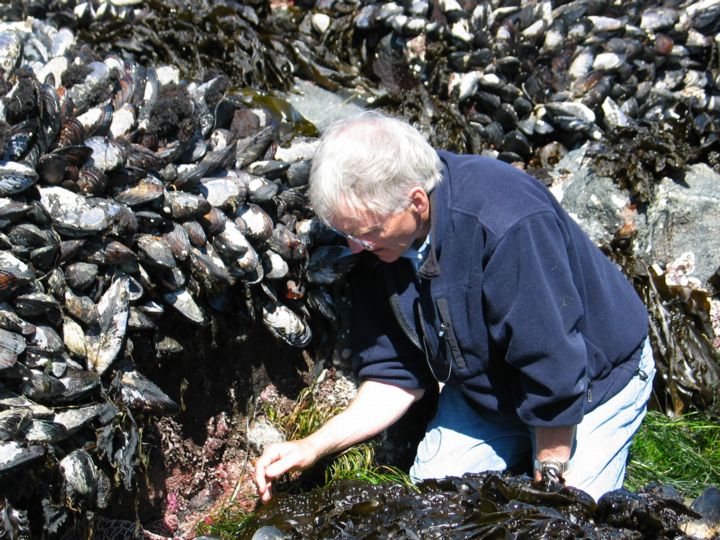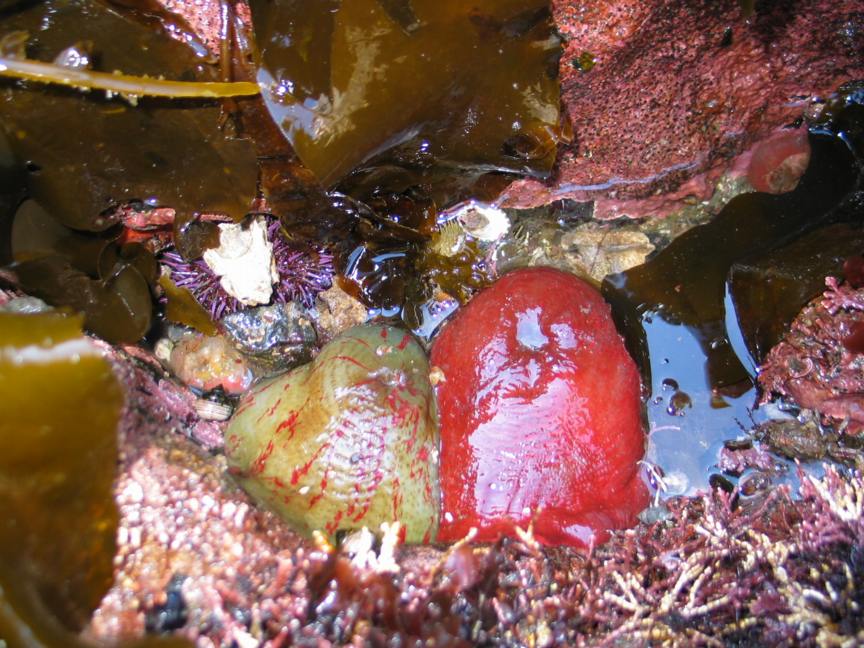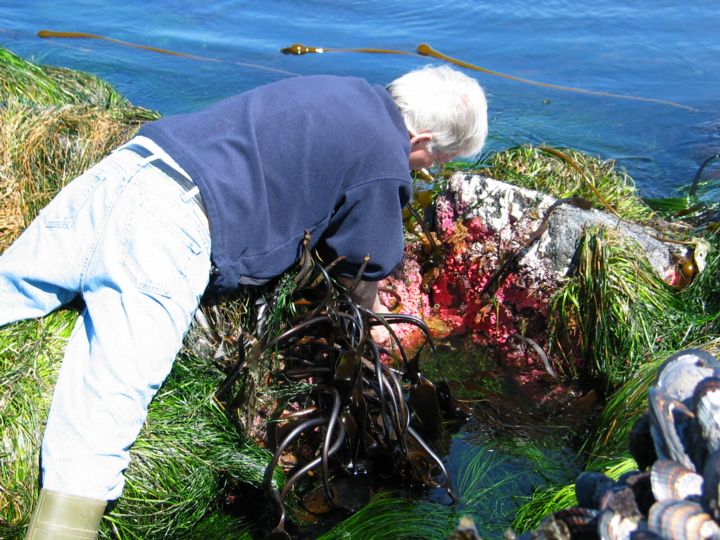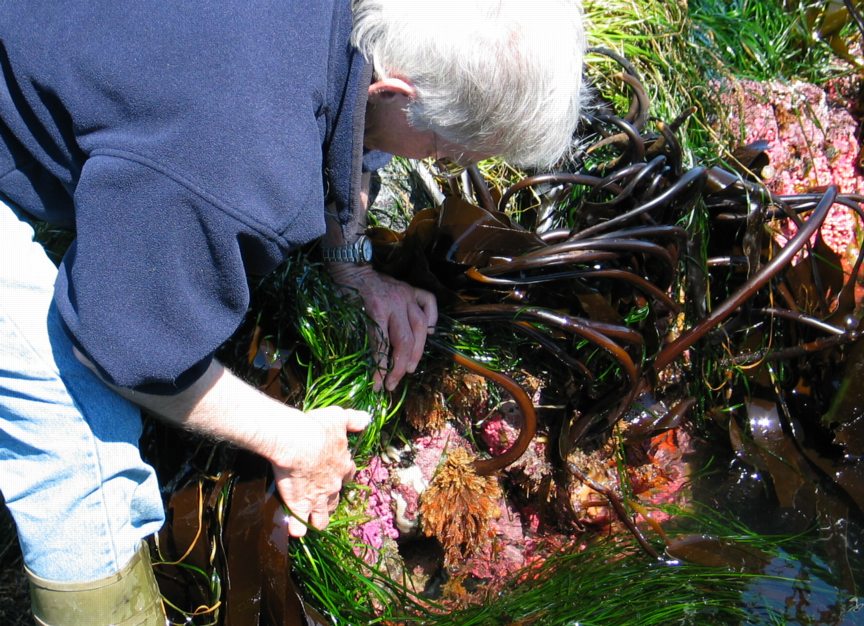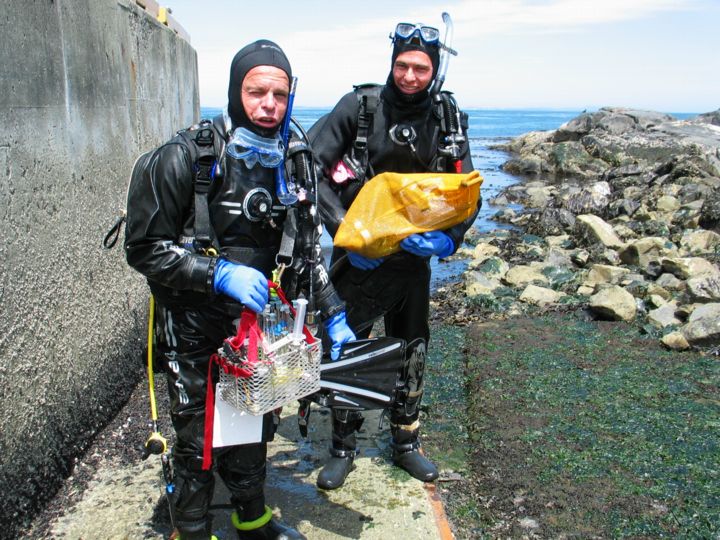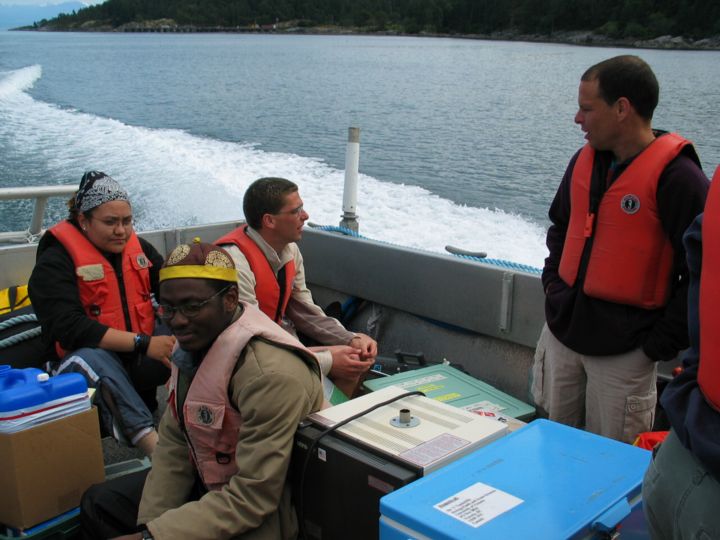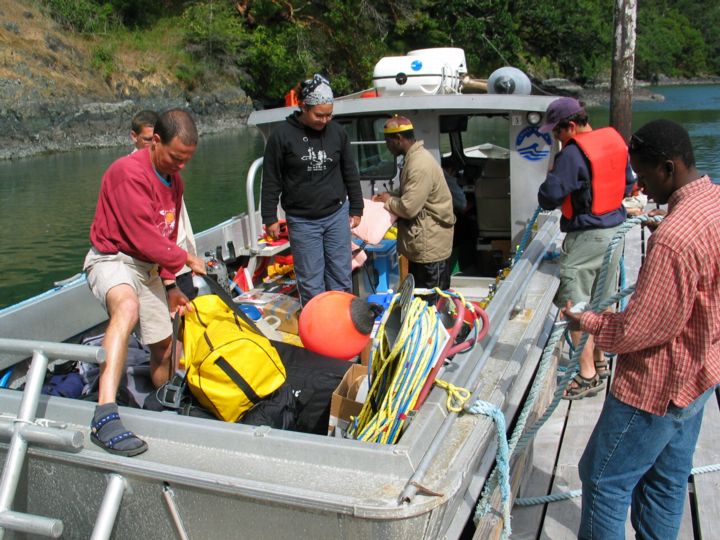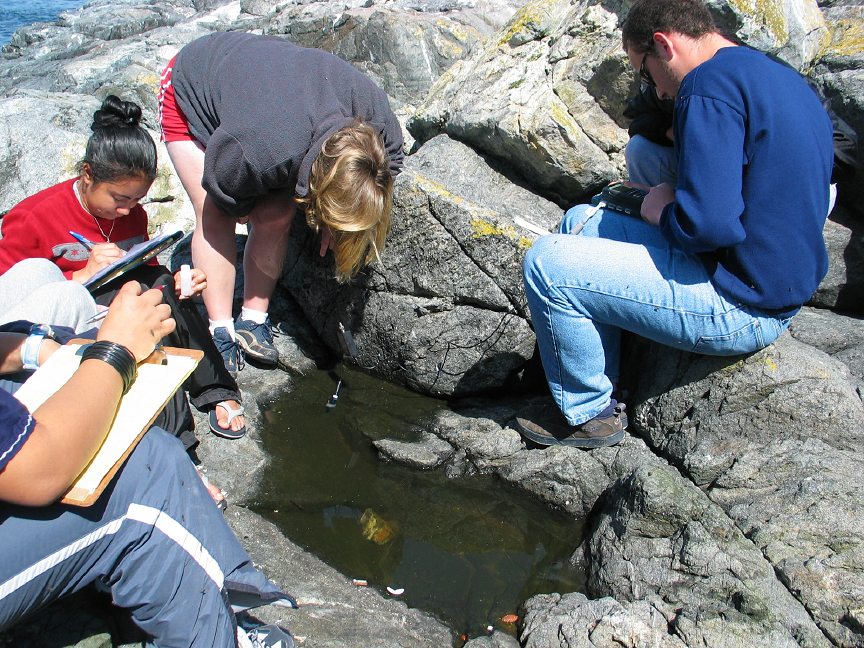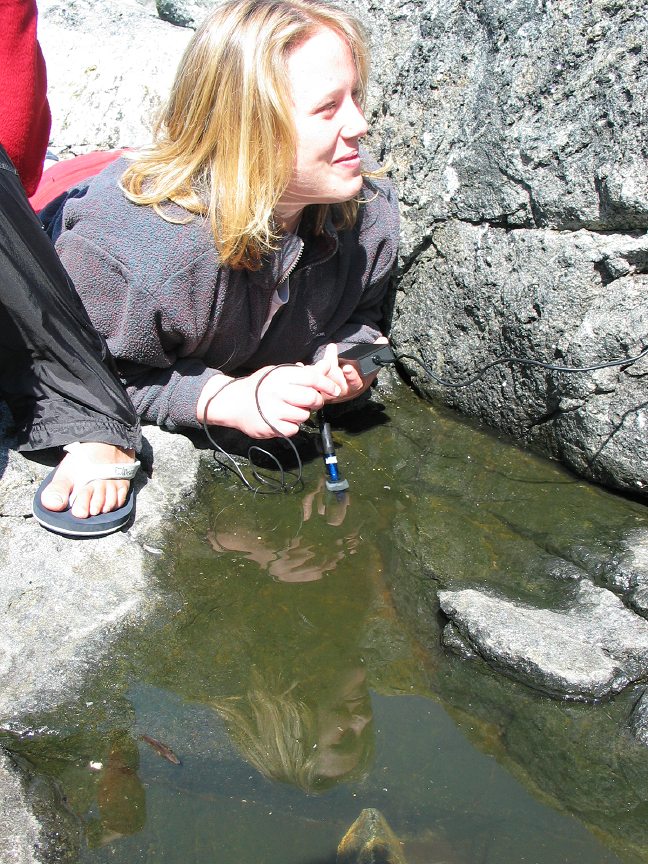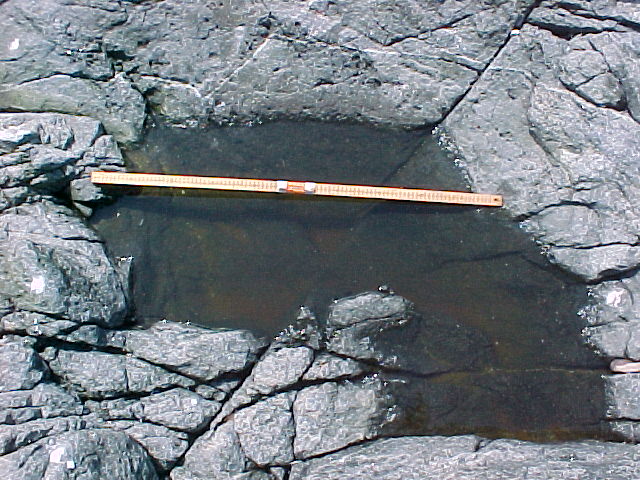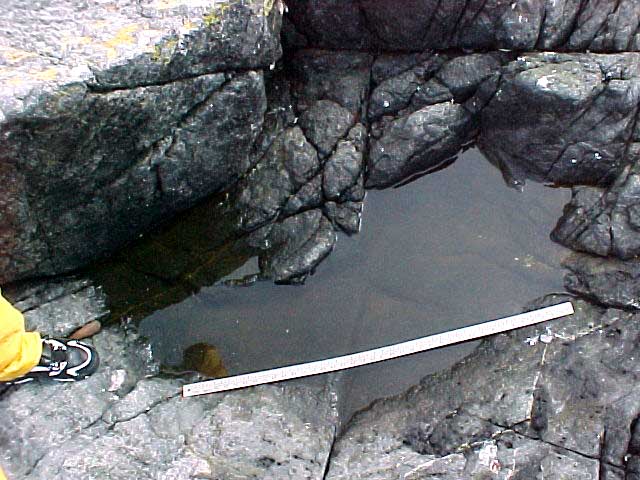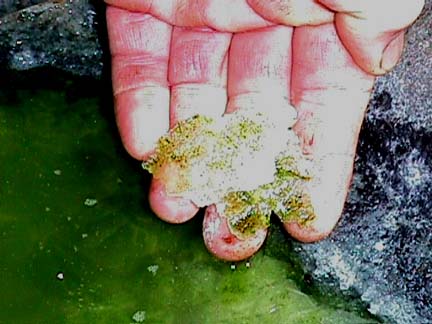During the Johan Ashuvud project 2004, students explored the intertidal with Garry Fletcher. They examined various organisms as well as the artificial tidepool. In this video, we also get a chance to meet all the students taking part in the project.
A school visit by Journey middle school students
The Johan Ashuvud Project June 2004
On 1st June 2004, during the Johan Ashuvud project, we had Dr Gitai Yahel and Russel Wyeth explain to the students and faculty from Journey Middle School in Sooke their research at Race Rocks . This was during a live webcast by Emmanuel (PC 30) from Ghana and Paul (PC 30) from Nigeria. Later we showed the students various living organisms in the tank room and gave the students a tour of the island.
Journey Middle School students visit Race Rocks
On 1st June 2004, during the Johan Ashuvud project we had Dr. Gitai Yahel and Russel Wyeth explain to the students and faculty from Journey Middle School in Sooke their research at Race Rocks . This was during a live webcast by Emmanuel (PC 30) from Ghana and Paul (PC 30) from Nigeria. Later we showed the students various living organisms in the tank room and gave the students a tour of the island. In those years, Pearson College students were part of the Schools Project whereby many schools in the Sooke School District would send their grade seven class on a field trip at the invitation of the Pearson College Diving Service.
Horizontal Structure in Ecosystems
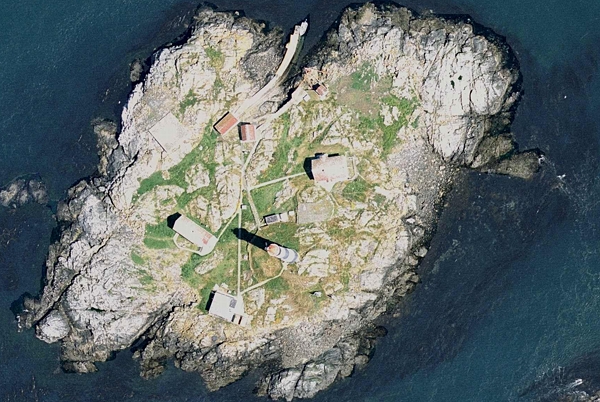
Introduction:In this file, we show the process and results of an investigation on some specific examples of horizontal structure of ecosystems
Objectives: After doing this lab, you will be able to:
a) Observe a species in its environment and determine its horizontal distribution.
b) Comment on the causes of horizontal distribution of vegetation at Race Rocks
c) Analyze how horizontal structure in your own ecosystem is determined by abiotic and biotic factors
d) Design your own protocol for analyzing the effects of horizontal structure on ecosystems.
e) Discuss the implications for Human built-up environments on Biodiversity of Ecosystems.
f) Quantify the amount of anthropogenic influence from human construction on the surface area of Race Rocks.
PROCEDURE: 
1. Use the remote cameras at Race Rocks and scan around for one species: mammal, bird or plant. Probably there will be more than one of these animals or plants in view. Once you decide on the species, be sure you know its correct identification. |
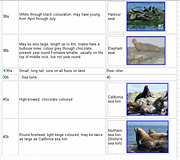
2. Go to this file for a dichotomous key to help in identification of birds and mammals. |
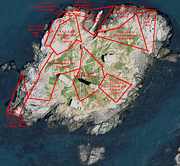 3. Look for patterns in the distribution of that species, the sector of the island in which it is located, whether it is near vegetation or on a rock, whether it is exposed to wind or not, or how closely it is located to the shore. See if you can add any ideas about how the horizontal patterns of the species are determined. Then add your sighting record summarizing these observations on the GIS database. Next observe the island from the air in the image above. This is part of the image of the GIS projection on OceanQuest. You can see just by the color, where pockets of accumulated soil have determined the horizontal distribution of vegetation on the islands. You can also see from this bird’s-eye view, how the surge and wave action producing salt spray and erosion around the edge of the island might have has produced this zone free of vegetation. 3. Look for patterns in the distribution of that species, the sector of the island in which it is located, whether it is near vegetation or on a rock, whether it is exposed to wind or not, or how closely it is located to the shore. See if you can add any ideas about how the horizontal patterns of the species are determined. Then add your sighting record summarizing these observations on the GIS database. Next observe the island from the air in the image above. This is part of the image of the GIS projection on OceanQuest. You can see just by the color, where pockets of accumulated soil have determined the horizontal distribution of vegetation on the islands. You can also see from this bird’s-eye view, how the surge and wave action producing salt spray and erosion around the edge of the island might have has produced this zone free of vegetation. |
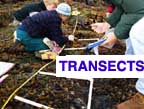 4. One of the field techniques of studying the horizontal distribution of organisms is also a technique which allows the production of baseline information about organism distribution. Go to this file on Environmental gradients, (which are determined by biotic and abiotic factors). It shows how a belt transect can be used to document changes of organisms through a specified distance. Describe the procedure used and indicate how records produced in this way may be very useful in measuring the effect of humans on ecosystems through time.( hint:Oil or other chemical spills) 4. One of the field techniques of studying the horizontal distribution of organisms is also a technique which allows the production of baseline information about organism distribution. Go to this file on Environmental gradients, (which are determined by biotic and abiotic factors). It shows how a belt transect can be used to document changes of organisms through a specified distance. Describe the procedure used and indicate how records produced in this way may be very useful in measuring the effect of humans on ecosystems through time.( hint:Oil or other chemical spills) |
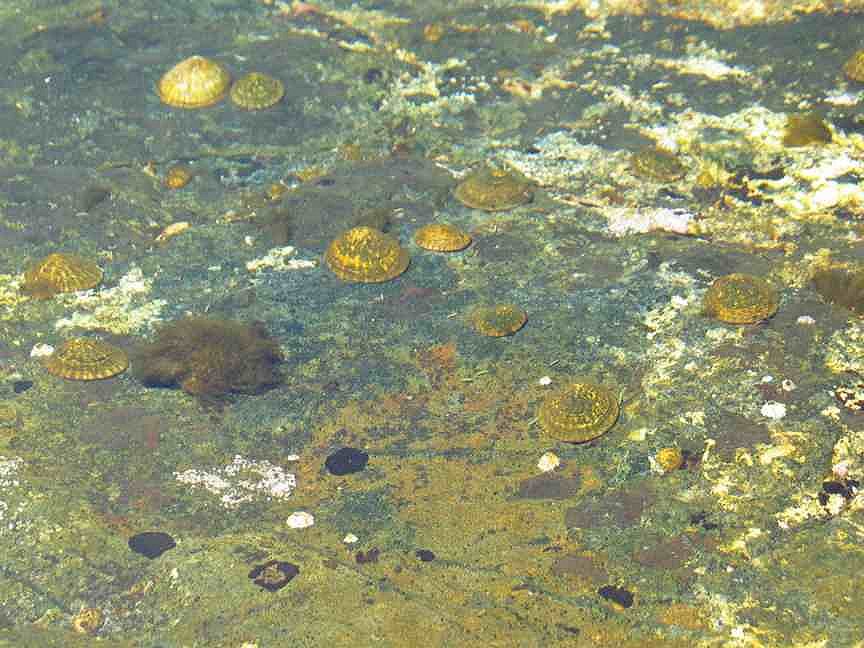 5.Organisms themselves often play the role of determining species distribution. Here in the artificial tidepool #13, limpets can be seen underwater grazing on an algal scum on the flat rock base of the tidepool. In this case, the limpet has determined the horizontal distribution of the algae, and vice versa, the remaining algal scum determines where the limpets will be distributed on the horizontal plane. Describe other examples of where organisms themselves determine distribution . Things to think of are: habitat and shelter, food sources, the presence of one species creating a “microniche” for another. 5.Organisms themselves often play the role of determining species distribution. Here in the artificial tidepool #13, limpets can be seen underwater grazing on an algal scum on the flat rock base of the tidepool. In this case, the limpet has determined the horizontal distribution of the algae, and vice versa, the remaining algal scum determines where the limpets will be distributed on the horizontal plane. Describe other examples of where organisms themselves determine distribution . Things to think of are: habitat and shelter, food sources, the presence of one species creating a “microniche” for another. |
6. Biodiversity of 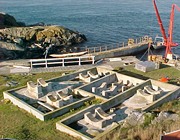 Ecosystems often suffers as a result of human activities. One could say that humans are probably the most significant organism in the effect on biodiversity. Describe two ways in which humans have a negative effect on biodiversity and two ways in which humans have a positive effect on biodiversity. Go to this file for an exercise which allows you to determine the influence of human activity on the horizontal patterns of distribution of organisms on Race Rocks. In this exercise we take a critical look at the Race Rocks Ecosystem, and actually measure and calculate the Anthropogenic footprint. In it you might encounter some examples of bioremediation and restoration, some interesting history and some mysteries. Most certainly you will discover the history of how human activities can have a big impact on an island ecosystem. Ecosystems often suffers as a result of human activities. One could say that humans are probably the most significant organism in the effect on biodiversity. Describe two ways in which humans have a negative effect on biodiversity and two ways in which humans have a positive effect on biodiversity. Go to this file for an exercise which allows you to determine the influence of human activity on the horizontal patterns of distribution of organisms on Race Rocks. In this exercise we take a critical look at the Race Rocks Ecosystem, and actually measure and calculate the Anthropogenic footprint. In it you might encounter some examples of bioremediation and restoration, some interesting history and some mysteries. Most certainly you will discover the history of how human activities can have a big impact on an island ecosystem. |
Water Supply: The Desalinator System at Race Rocks
Race Rocks ecological Reserve functions as an isolated system. Fresh water for human use may only be obtained by processing sea water through the desalinator. Energy is generated through solar panels and backup generators. The desalinator depends on these sources of energy to function. The more efficient the desalinator, the less energy is used. The students take us through the process:
- Just over the bank from the winch house is the seawater intake for the desalinator
- A line was concreted through the intertidal, and this pump in the winch house draws up the seawater and sends it over to the storage cistern.
- The concrete storage cistern is what used to be the main cistern to collect seawater from the roof of the light keepers residence. It is gradually developing a “green roof” with a covering of Sedum.
- In the 1970’s, this concrete block bomb-shelter or “Diefenbunker” was conve
- Entrance to the room. The Marine Protected Area Guardians who live on the island look after this equipment and start it up occasionally in order to replenish the water storage tank.
- The hoses and taps control the flow of water into and out of the desalinator.
- The desalinator is capable of processing 0.25 Gallons of salt water per minute on 220V. This coarse filter removes the plankton and sediments.
- The desalinator is the type used on boats where people live-aboard at sea. It contains membranes in the filters that allow fresh water to pass through at a pressure of 800 PSI.
- The water that does not go through the osmosis process is flushed back out to the sea down through a drainage hose. After passing through the desalinator, the fresh water is pumped back outside to the insulated water storage tank in the shed on the left where it is stored. The water that does not go through the osmosis process is flushed back out to the sea down through a drainage hose.
- and the only other source of fresh water on the island.. after a rainstorm
Marine mammal Census
Orca’, 4,
Northern Sea Lion’, 4, ‘On middle island’,
Elephant Seal’, 2,
Tidepool # 12 at Race Rocks
This pool is above the highest tidal level. It only gets replenished with sea water during a storm event with a high west wind and a relatively high tide.
- North section
- Middle section
- South sectio
- Hugo and Eva measure pool depth, temperature and salinity.
Images Garry Fletcher
Some ideas to consider:
Go to the Environmental Data page and using the data from the weather pages there, predict when such events may occur.
The Johan Ashuvud 2004 project
n the first week of June 2004, four students and two researchers stayed at Race Rocks for an intensive week. Sponsorship for this week comes from the Johan Ashuvud memorial fund. Webcasts of the day’s events took place every night and on two days, school groups came out to help produce a program for live webcasting.
- Arriving at the island in “Second Nature”
- Paul, Emmanuel and Carmen
- Paul, Emmanuel and Carmen Emmanuel and Paul exploring and taking videos of the intertidal zone with the tower in the background.
- Setting up the camera in the intertidal zone. It is not an easy job getting good footage of the intertidal zone
- Emmanuel observing organisms in the intertidal zone zone hidden among the rocks
- A gumboot chiton in a bed of brown algae. Here we see Emmanuel trying to detach it from the rock to examine the ventral surface.
- Low tide exposure on the West shore. Michelle takes the opportunity of the low tide to work on her research project on goose neck barnacles
- This sea star, the purple or ochre star is common in other areas along the coastline, but this is the only specimen we have found here
- Garry in the mussel bed
- Tealia anemone exposed at the extreme low tide
- Tealia anemone exposed at the extreme low tide. Pink hydrocorals are exposed at low tide on the West shore
- exposed at low tide on the West shore. Hydroids exposed at an extreme low tide on the West shore.
- Gitai Yahel and Russel Wyeth stayed with the students for the week, sampling for his research on suspension feeders.
- Ride back to the college after completing the Johan Ashuvud project.
- Return to Pearson College at the end of the week.
(https://www.racerocks.ca/johan-ashuvud-project-at-race-rocks-2004/)
During the Johan Ashuvud project 2004, students explored the intertidal with Garry Fletcher. They examined various organisms as well as the artificial tidepool. In this video, we also get a chance to meet all the students taking part in the project.
Variables Affecting Tidepools at Race Rocks
n the high intertidal areas of Race Rocks, there are tidepools with wide fluctuations of abiotic factors. The organisms inhabiting these pools are well adapted to these extremes. Garry talks to a biology class about some of the variables influencing these high tide pools, and the flagellated green algae living within them.
Tidepool # 7 at Race Rocks
- meter stick on pool 7
The most striking feature about this tidepool is that since it is at such a high level on the intertidal, in the heat of summer, there is evaporation which concentrates the salinity into a saturated solution even beyond the range of measurement on the salinometer. Even in that high concentration as can be seen in the following picture, a green algae lives among the salt crystals
Some ideas to consider:
Tidepools 7and 8 are situated very close together, differing only in a few centimeters in elevation. The salinity and temperatures of the pools may vary however. It might be worthwhile to document these variations and propose some explanations for the variation.

